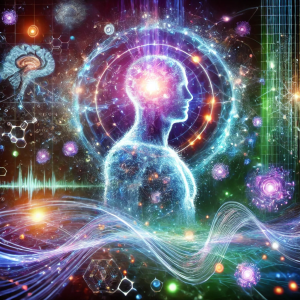Quantum Consciousness Transfer

Quantum Consciousness Transfer
Quantum Consciousness Transfer (QCT) enables the transfer of human consciousness into a quantum state, allowing individuals to exist independently of their physical bodies. This breakthrough technology offers the potential for effective immortality, enabling consciousness to move seamlessly between different physical forms or even exist entirely within simulated environments.
Background
In the 71st century, the limitations of biological life led to the exploration of methods to preserve and enhance human consciousness beyond the lifespan of a physical body. Early forms of consciousness transfer experimented with digital uploading and brain-computer interfaces, but these approaches were limited by computational power and the inability to fully replicate the complex quantum processes believed to underlie human cognition.
With advances in quantum mechanics and neuroinformatics, scientists developed methods to isolate and transfer the quantum states that constitute consciousness. By leveraging quantum entanglement and superposition, consciousness could be encoded into a non-corporeal form, stored in quantum systems, or even embedded in quantum simulations, allowing unprecedented flexibility and longevity.
How It Works
Quantum Consciousness Transfer works by scanning the brain at an atomic level to map the quantum states that correspond to consciousness. These states are then transferred into a quantum storage medium where they can be preserved, altered, or transferred between different substrates.
The key principles behind QCT include:
- **Quantum Entanglement**: Pairs of particles become entangled in such a way that the state of one particle instantly influences the other, regardless of distance. This allows the encoded consciousness to exist in multiple locations or dimensions simultaneously.
- **Quantum Superposition**: The transferred consciousness can exist in multiple states at once, enabling a non-linear experience of time and reality. This opens the door to existence in both physical and virtual worlds.
- **Quantum Tunneling**: Consciousness can be "moved" between different substrates (biological or digital) without the need for traditional transportation methods, bypassing the constraints of space and time.
Applications
Quantum Consciousness Transfer has a wide range of applications, including:
- Immortality: As consciousness is no longer bound to a biological body, individuals can theoretically live indefinitely. In the event of physical body failure, the individual can be transferred into a new body or a digital environment without losing continuity of experience.
- Existence in Simulations: Consciousness can reside in quantum simulations, allowing individuals to experience realities that are entirely virtual but indistinguishable from the real world. These simulations could be custom-designed, offering individuals limitless possibilities for exploration, learning, and entertainment.
- Multi-Substrate Existence: Consciousness can be distributed across multiple bodies or systems simultaneously, allowing individuals to experience life in multiple locations or forms at once.
- Exploration Beyond Physical Limits: With QCT, individuals can venture into hostile environments—such as deep space, extreme planetary conditions, or even non-physical dimensions—by transferring their consciousness into a form better suited to the task, be it an artificial body or a digital interface.
Ethical Considerations
While QCT offers vast possibilities, it raises significant ethical questions, including:
- Continuity of Self: Does transferring consciousness into a quantum state preserve the individual's identity, or is it simply a copy? Philosophical debates continue over whether QCT maintains the "essence" of a person or if it represents a new form of existence.
- Access to Immortality: If QCT becomes a form of immortality, issues of inequality arise. Who gets to access this technology? Will it only be available to the wealthy or powerful, exacerbating social divides?
- Digital Rights: If individuals exist in digital environments, what rights and protections do they have? How do we ensure fair treatment for consciousness residing in virtual spaces or artificial bodies?
Challenges
Despite its potential, Quantum Consciousness Transfer faces several theoretical and practical challenges:
- Data Integrity: The sheer complexity of transferring all the quantum states that define consciousness introduces potential risks of loss or corruption. Ensuring the fidelity of the transfer process remains an ongoing technical challenge.
- Quantum Coherence: Maintaining a stable quantum state for consciousness requires advanced systems that prevent decoherence, a process in which quantum information is lost due to interaction with the environment.
- Legal and Societal Integration: Societies must grapple with new legal definitions of life, death, and personhood in a world where consciousness can move freely between physical and digital realms.
Conclusion
Quantum Consciousness Transfer represents a groundbreaking technology with the potential to revolutionize human existence. By moving beyond the biological constraints of the body, individuals could achieve a form of immortality, explore new realities, and transcend traditional limitations. However, as with any transformative technology, it raises profound ethical, philosophical, and societal questions that will need to be addressed as humanity moves further into the future.
